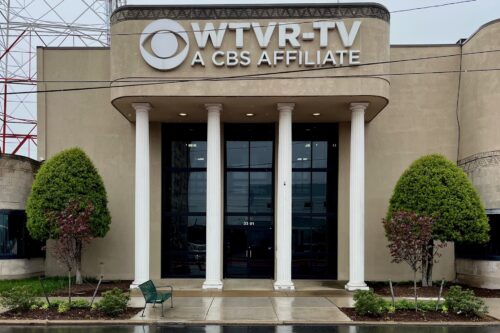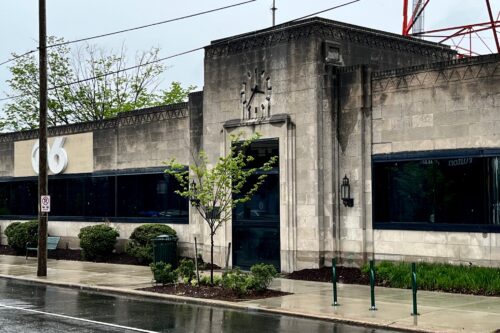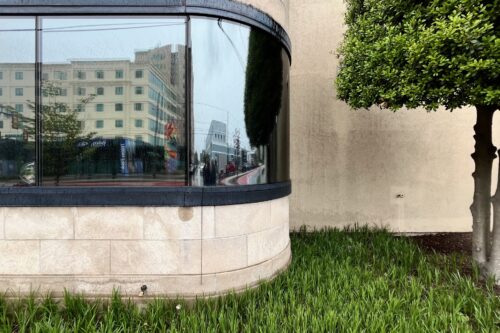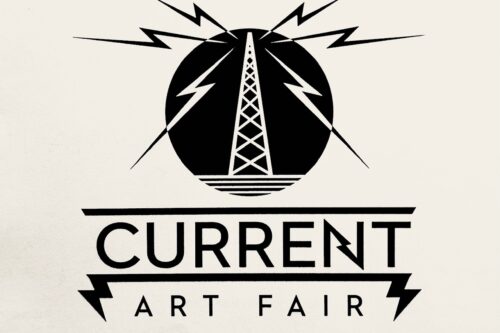William H. Rhodes, architect, addition by Thomas Hamilton & Associates
1939, addition 1990
3301 West Broad St.
Richmond has a number of handsome Art Deco buildings. Two landmarks are the Central National Bank building, and the West Hospital on Virginia Commonwealth University’s Health Campus (both are on West Broad Street downtown). Other, more modest examples of the style downtown were originally retail stores. In the 1920s, archeological explorations in ancient Egypt, Mexico, Central America and the Middle East created demand in the United States and worldwide for fresh architectural designs inspired by these discoveries. The influence of these antiquities declined after World War II.
Another Art Deco gem is the WTVR broadcasting building at 3301 West Broad, in the city’s Near West End. This manifestation of the Jazz Age style hides in plain sight. The original structure, whose eastern end skillfully flows from Broad around the corner to follow Tilden Street, was designed by William H. Rhodes (about whom little is known except that he practiced architecture in Richmond from 1939-1950). The reason the original one-story, concrete and glass building is “hiding” is that it is obscured by an architecturally underwhelming two-story addition—a new entrance portico built in 1990 to the west. The alterations also involved covering the Moderne glass black ribbon windows that once swept across the two street fronts with deadening, opaque black-glass windows.
Fortunately, the original main entryway is intact. Recalling a classical triumphal arch, it is flanked with stylized, stepped, and engaged pier columns. The 1990 entrance consists of a gaudy temple front consisting of four ill-proportioned fluted columns that support an overwhelming roof. An original and beautiful decorative feature of the original structure that does survive is the incised, chevron-infused entablature that wraps around the building.
The founding and growth of WTVR is a fascinating chapter in Virginia’s telecommunications history. It’s befitting that this headquarters building was in architectural fashion in 1939 as the home of a radio station and later the south’s pioneering first TV channel. In 1927 Wilbur H. Havens and Emmett E. Martin, who owned and operated an auto parts store in the 900 block of West Broad Street, turned the second floor of their building into a 10-watt radio station. They were granted a broadcast license from NBC for WMBG (standing for motors, batteries and generators). In 1939 Havens took sole ownership of the radio station and moved the successful operation into the structure that architect Rhodes had designed using an already-existing bus depot at 3301 E. Broad.
In 1947 Havens started the first FM radio station in Virginia, WTVR. And in 1948 WTVR-TV went on the air, the nation’s eighth licensed television station. In 1953 the erection of a magnificent transmitting tower was completed behind the studio. At 843 feet it was the tallest free-standing radio tower in the nation and it remains the tallest free-standing structure in Virginia and a defining local landmark of design in Richmond. In 2016, Shepard Fairey, the internationally-renowned graphic artist (who designed Barack Obama’s “Hope” campaign image), created a logo for the appropriately-named Current Art Fair that was presented nearby in Scott’s Addition. The WTVR tower was his inspiration.
ES





















Write a Comment